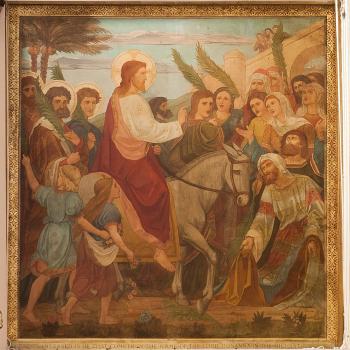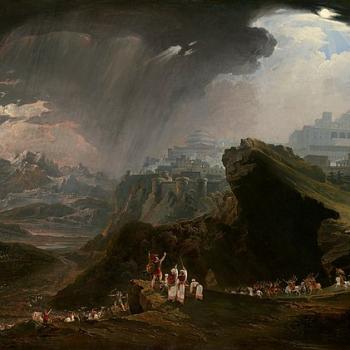Today as I was adding “Swedenborg” to my Google News page, I stumbled across a Culture24 article from a couple weeks ago about a new exhibition at the Brent Museum in Brent, London (England, not Ontario). The exhibition focuses on the architecture of Ernest Trobridge, an obscure (i.e., Wikipedia-entryless) Swedenborgian architect who designed several homes in North East London. Apparently he incorporated a lot from the Writings into his architectural philosophy. It’s hard to find out much about him on the internet, so I emailed the Brent Museum and asked for more information; I’ll post an update when I hear back from them.
One paragraph from the article that particularly struck me talked about Swedenborg’s theories on architecture:
Swedenborg’s theories of balance between nature and architecture meant Trobridge’s designs boasted a heady union of symbolism and utility with an emphasis on the sheltering roof, the focal hearth and stylised entrances.
I don’t know that Swedenborg had any specific theories about balance between nature and architecture (although I can’t say I’ve read every single word he penned). But the rest – describing a “heady union of symbolism and utility” – makes perfect sense for a Swedenborgian architect. I hadn’t thought about it in those terms before, but the Writings really are unusual in that they focus a great deal on inner meanings, symbolism, etc. – and yet again and again they drive home the importance of use, of living in the world in a practical way (see for example Heaven and Hell n. 528: “To receive the life of heaven a person must live in the world and engage in its business and employments.”) For a New Church person, “utility” – or usefulness – is the ultimate expression of God’s love and wisdom in the world.
I wonder if this emphasis on combining symbolism and depth with practical usefulness makes New Church people particularly drawn to architecture. I’ve heard rumours of some vague connection between Frank Lloyd Wright and Swedenborg, although I’ve never seen them corroborated. The most famous Swedenborgian architect is Daniel Burnham, who designed the Flatiron Building in New York City and Union Station in Washington, D.C., among other notable buildings.
Searching for Swedenborgian architects doesn’t actually turn up much besides Burnham and Trobridge. The only other one that turned up was Herbert Langford Warren (also without his own entry on Wikipedia), who founded the Harvard School of Architecture. Judging by the paucity of Google results for “Swedenborgian Architects,” maybe my thesis on Swedenborgians being drawn to architecture is faulty (or maybe there just haven’t been a lot of Swedenborgians, period).
Still, I know that I’m personally drawn particularly to architecture, and I think a lot of that has to do with the value I put on “use” or “utility.” According to Wikipedia, the earliest surviving work on architecture, De Architectura by Vitruvius, lists the three qualities of a good building: durability, utility, and beauty. It’s not too much of a stretch to link these to the New Church concepts of wisdom (i.e. making the building in a way that will work with the laws of the physical world), use (this one’s pretty obvious), and love (i.e. stirring human affections). You can find love, wisdom, and use in any art, of course – but I think they stand out particularly in beautiful, sturdy, useful architecture.











